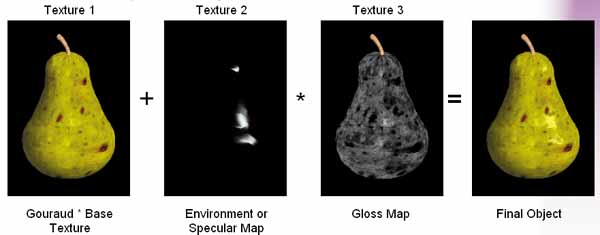The 0.18-micron Radeon 256 features an interesting architecture, consisting of two rendering pipelines with three texture units per rendering pipeline.
Each pipeline is spec’d to run at up to 200MHz (core clock), which will result in a fill rate of 400 megepixels per second and 1.2 gigatexels per second. ATI feels that having three texture units per pipeline is going to help them in future games, and although it will hold them back with dual textured games, they strongly believe that developers will begin using three or more textures per pixel in future games.

According to ATI, even if you’re using 200MHz DDR SDRAM (effectively 400MHz), you’re limited to a 300 megapixels per second fill rate at 32-bit color with a 32-bit Z-Buffer, so adding more pixel pipelines wouldn’t help them, which is why they focused on having three texture units per pipeline. This is their reason for not adding more pixel pipelines, whether or not this is actually the case is another issue entirely.

One thing you will notice about the Radeon 256 is that there is a strong sense of solid developer consulting on the part of ATI. Instead of stabbing in the dark regarding to what features the Carmacks and Sweenys of the industry will be implementing in the future, ATI focused on improving their developer relations and consulting with the developers that are going to be driving the industry and asked them what features they would like to see.
Each Radeon 256 chip (indicating the possibility of a Radeon 256 MAXX product with more than one Radeon 256 chip) is capable of driving up to 128MB of SDRAM. Depending on the availability of specific SDRAM parts, we may see Radeon 256 based products emerge with more than 32MB per chip.
The Radeon 256 architecture features a 128-bit memory bus capable of interfacing with both SDR and DDR SDRAM. As of now, we can expect to see 200MHz DDR SDRAM (effectively 400MHz) on the shipping Radeon 256 based product; however, depending on the availability of 200MHz DDR SDRAM, this could change. Considering that you can’t expect to see a Radeon 256 based product until August 2000, getting 200MHz DDR SDRAM shouldn’t be a problem for ATI closer to the shipping date of the card.

Assuming that the Radeon 256 is outfitted with 200MHz DDR SDRAM, this gives it a fairly large amount of memory bandwidth to play around with. With a 128-bit memory bus, running at 200MHz DDR, we’re talking about 6.4GB/s of peak available memory bandwidth. For comparison purposes, a DDR GeForce has 4.8GB/s of available memory bandwidth, and the upcoming GeForce 2 GTS will have around 10% more than that.
As we have seen over the past few months, the memory bandwidth of today’s graphics accelerators is severely limiting their performance. The perfect example is the incredible performance advantage switching to DDR SGRAM offered the GeForce over its initial SDR SDRAM memory solution. This should definitely be an area where the Radeon 256 excels, but then again, with the features that ATI is promising with this new core, they’re going to need all the memory bandwidth they can get.










0 Comments
View All Comments